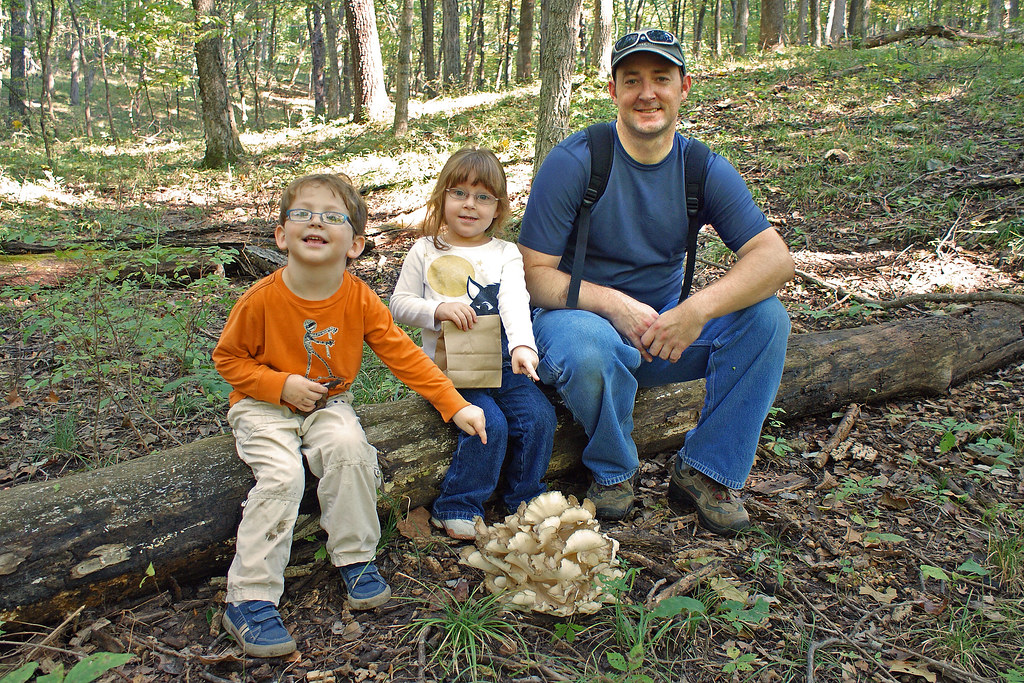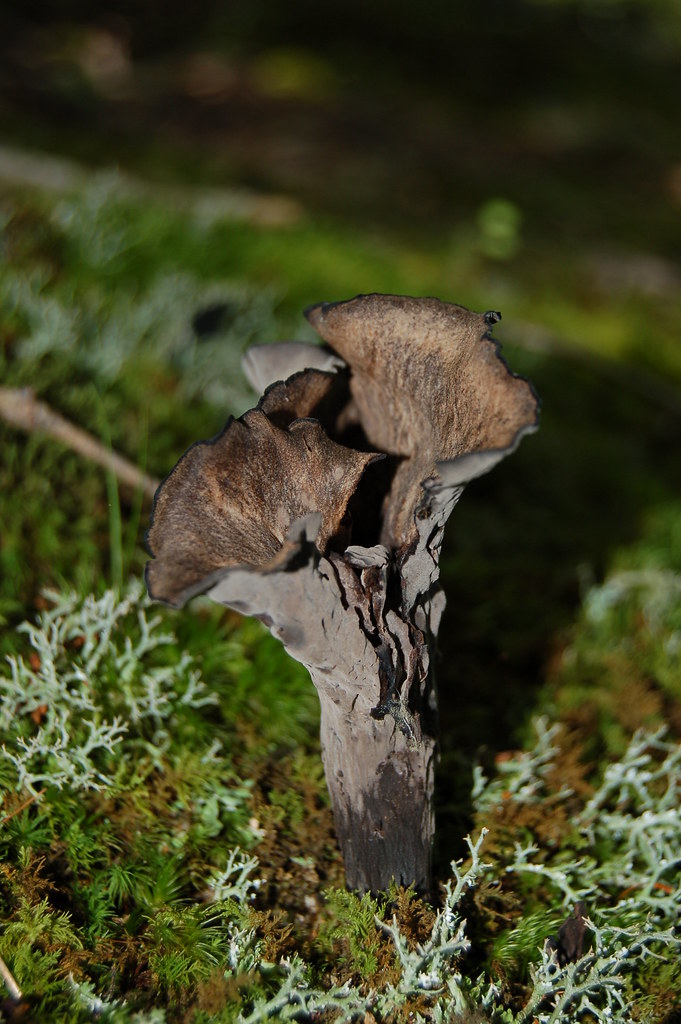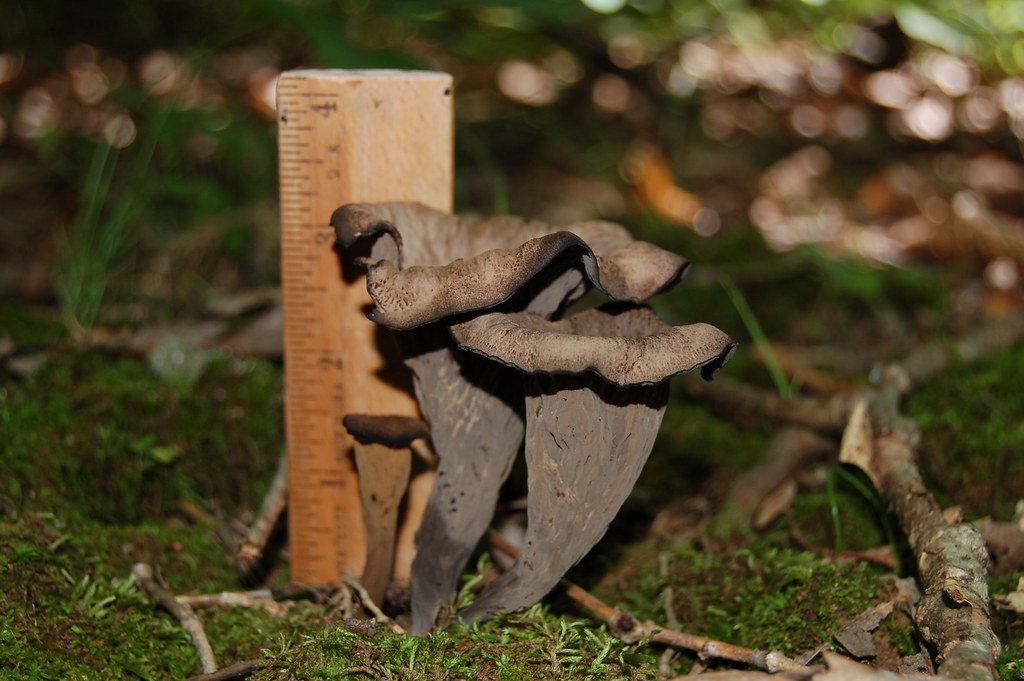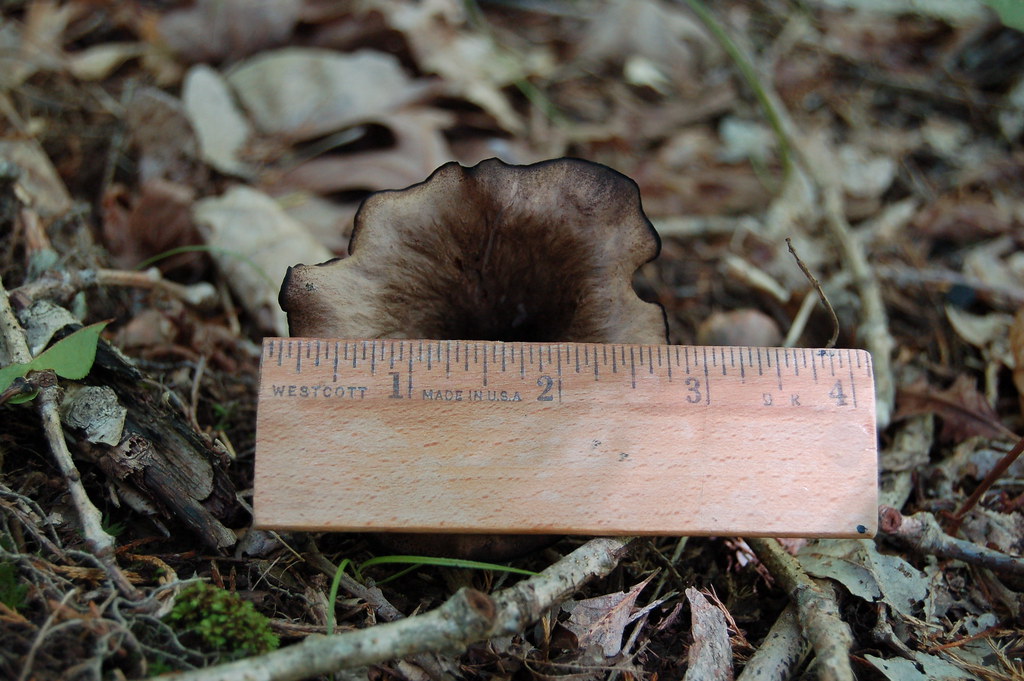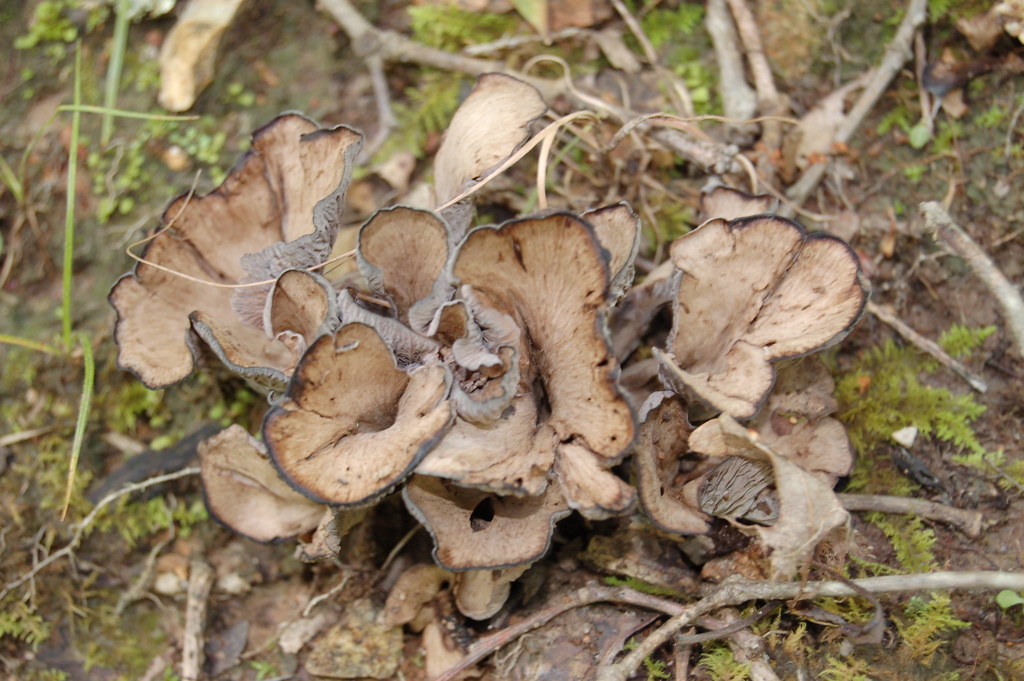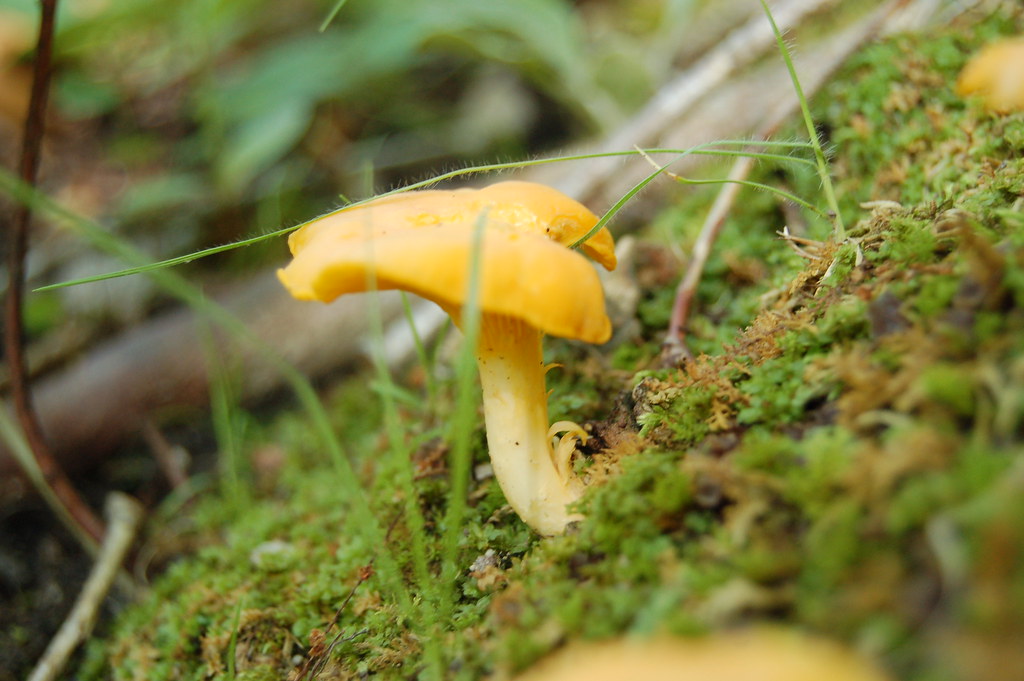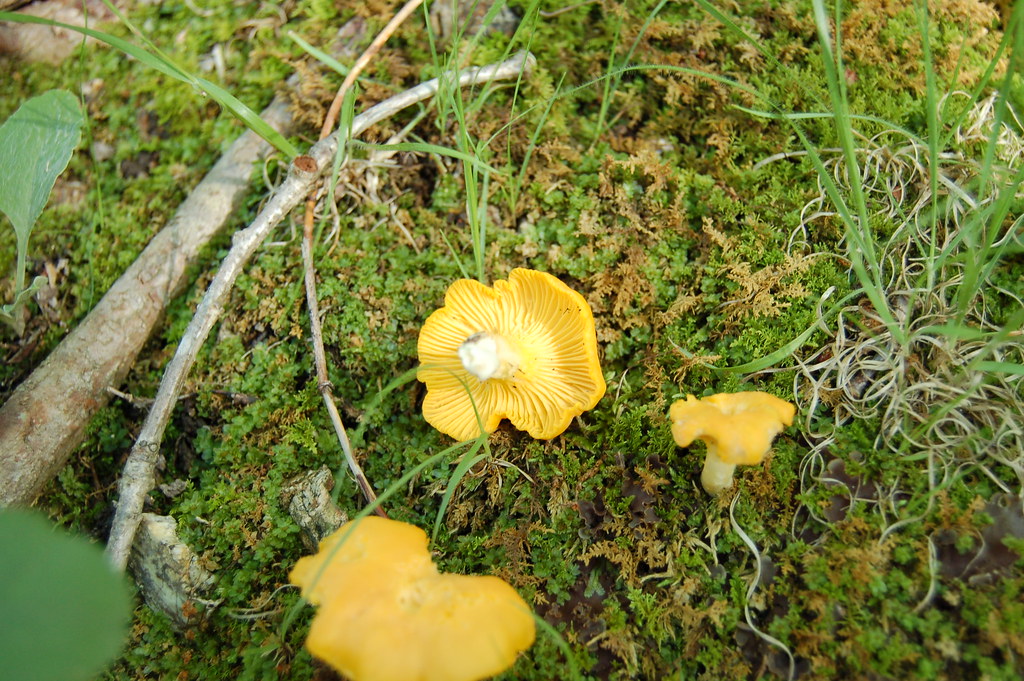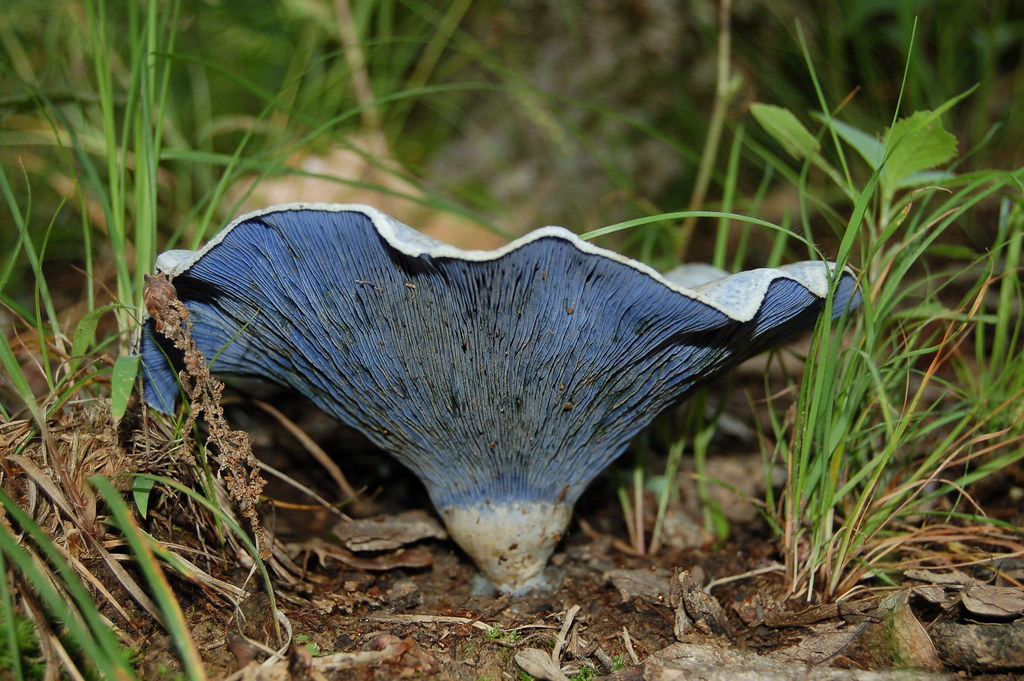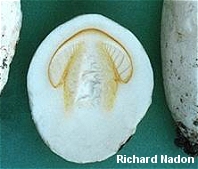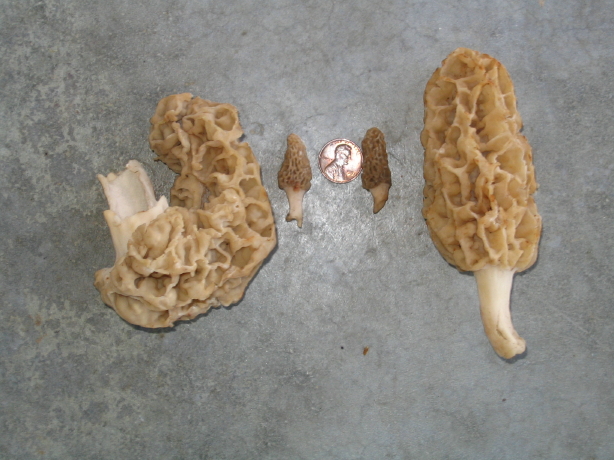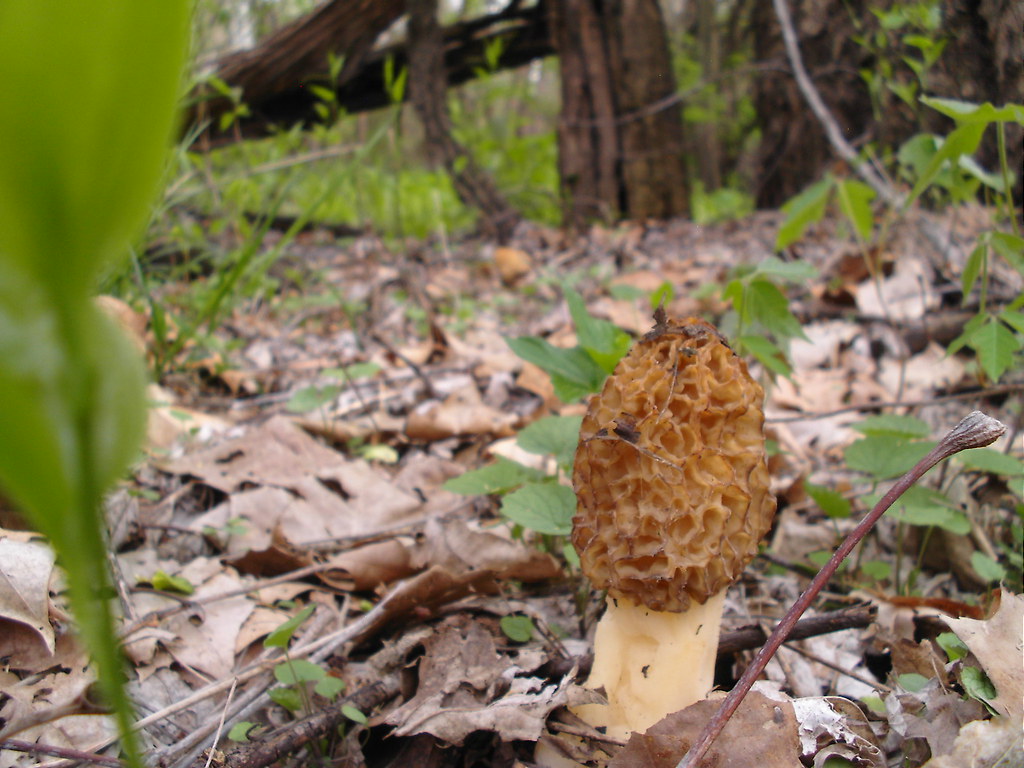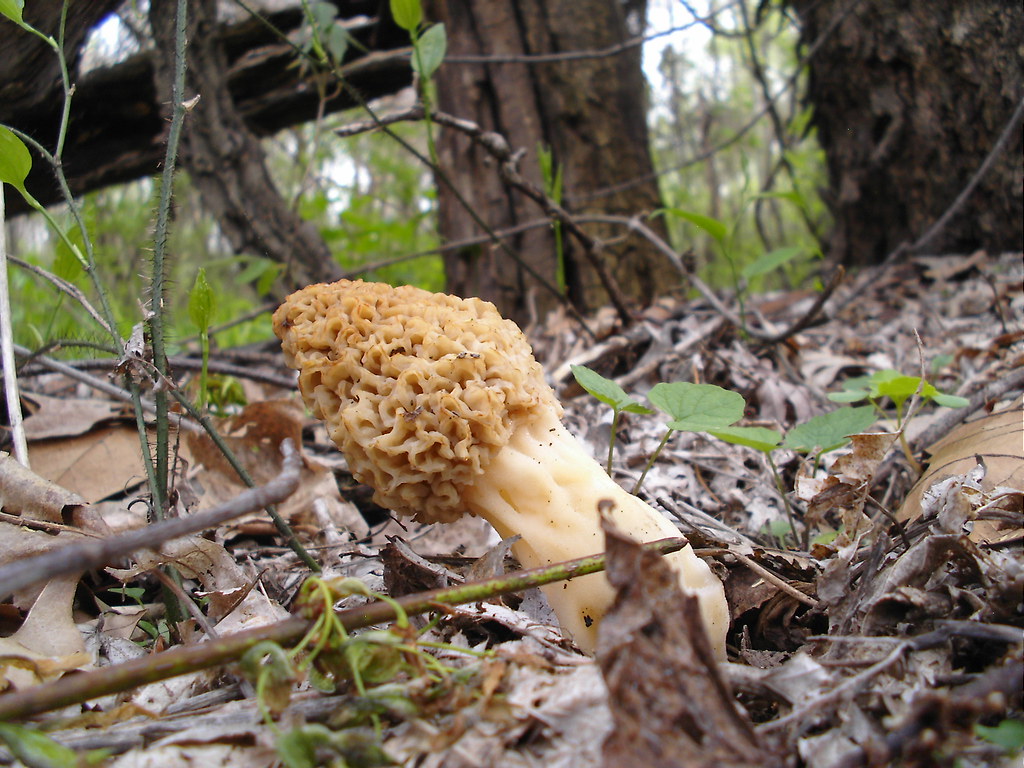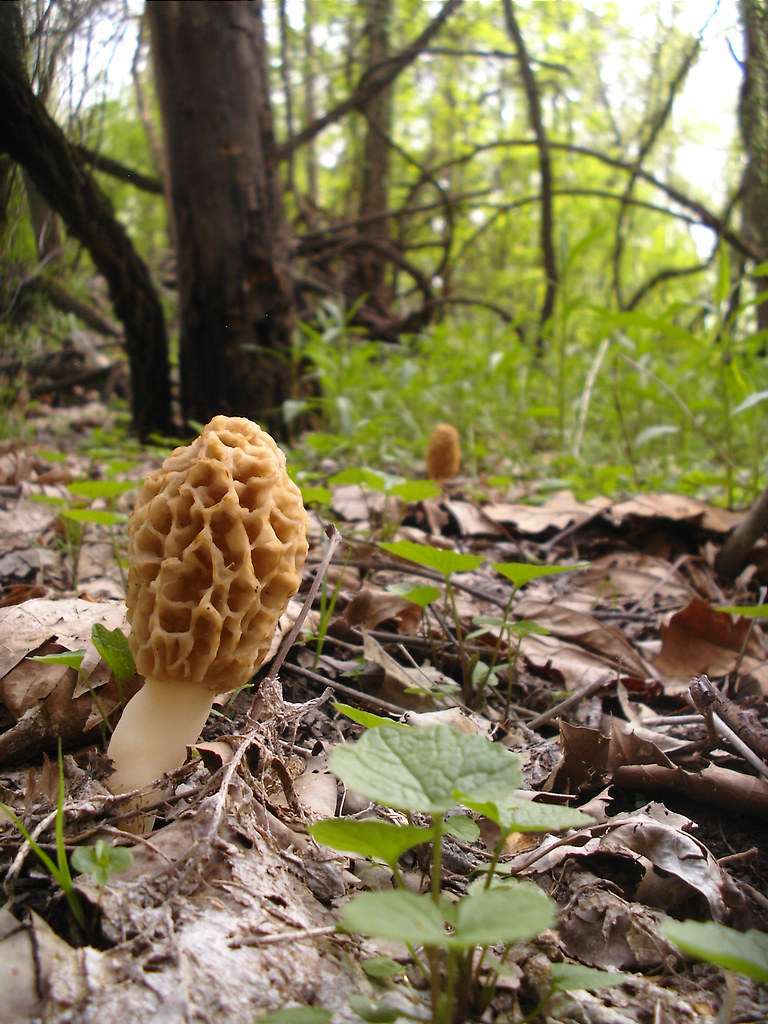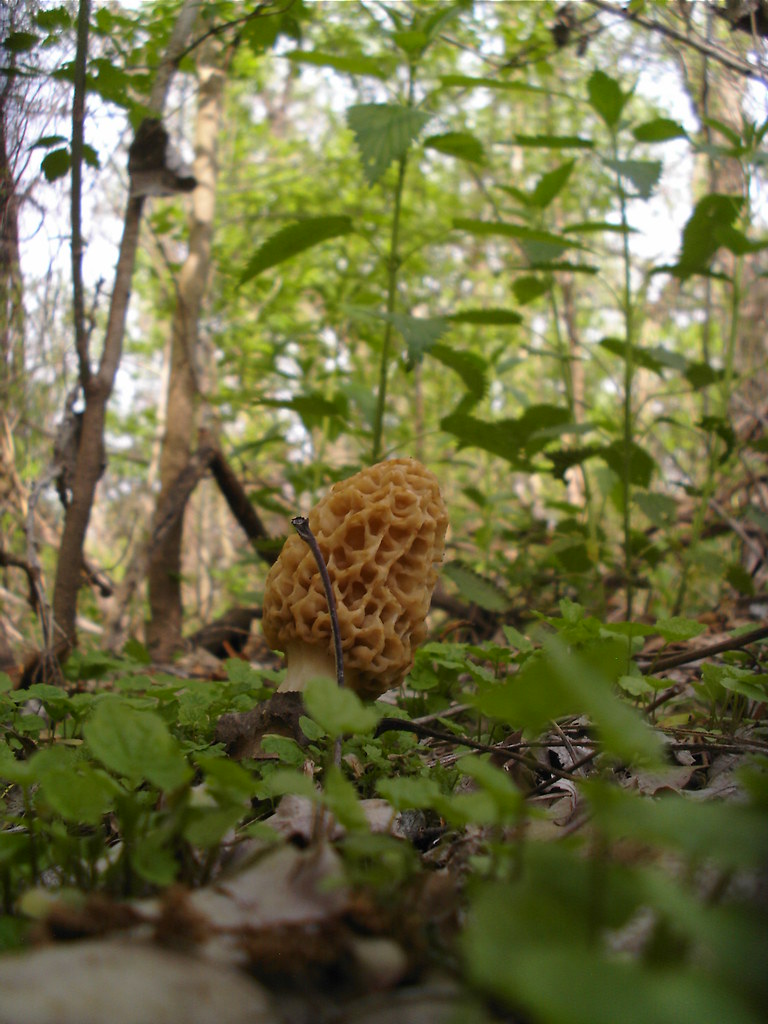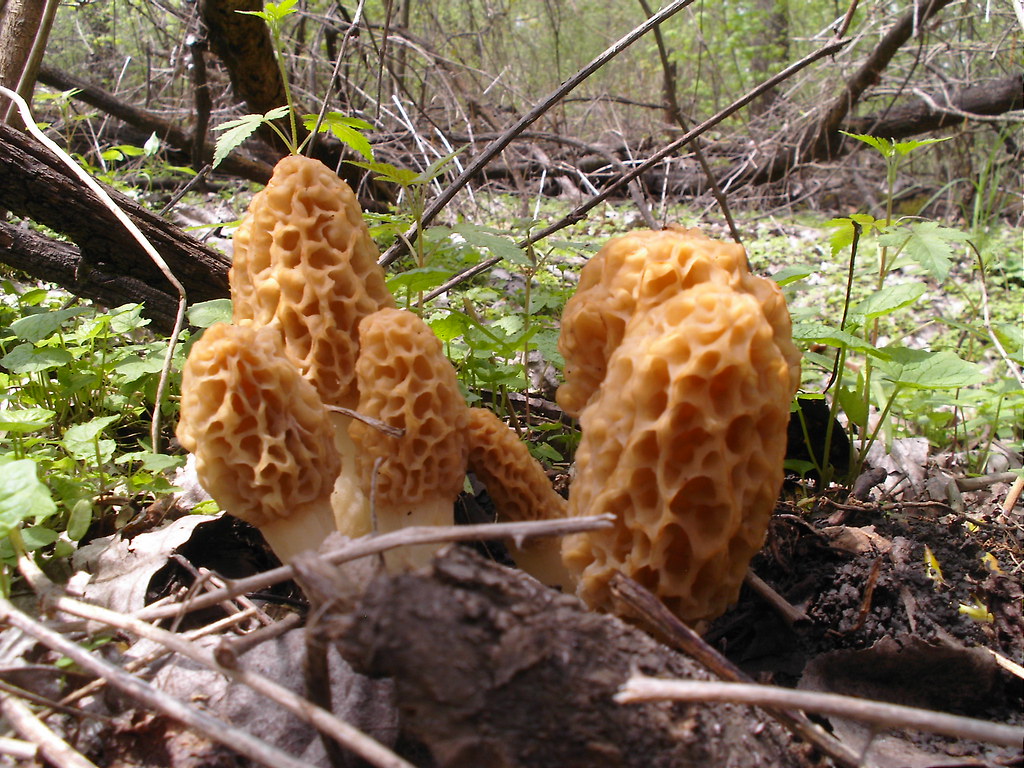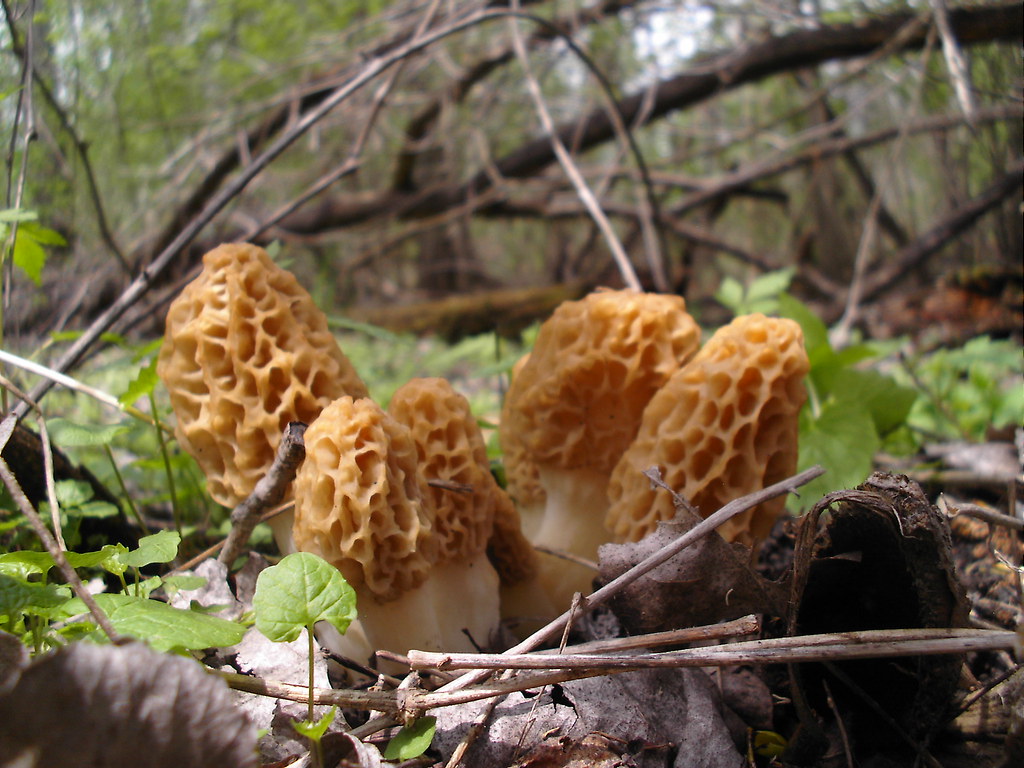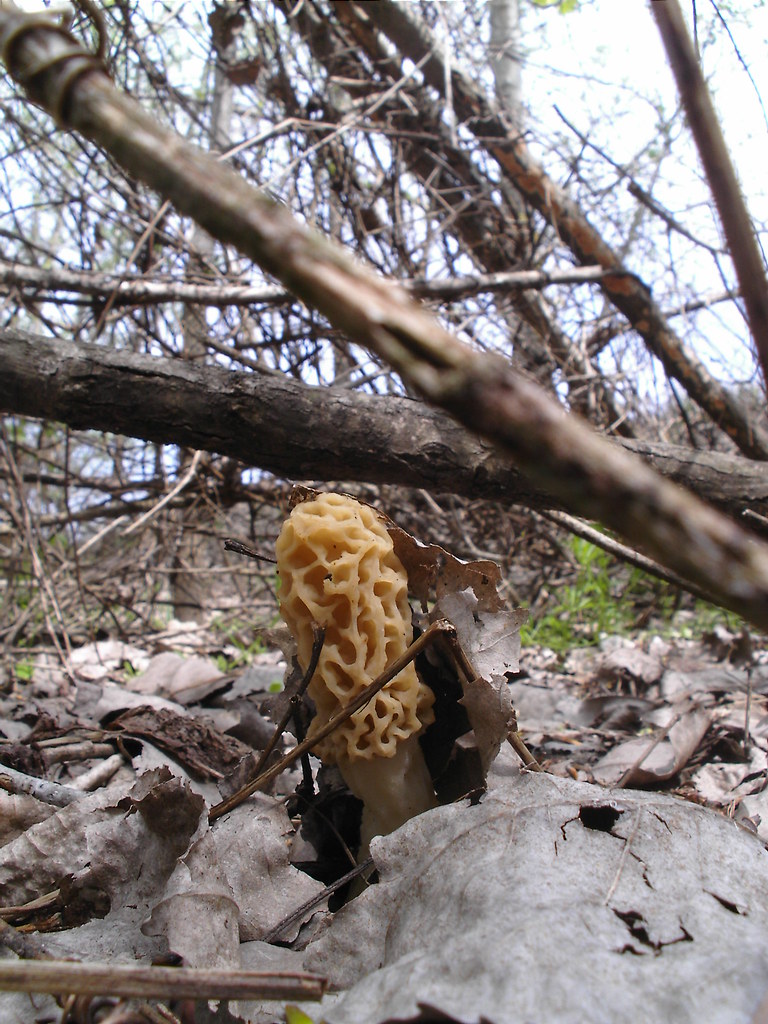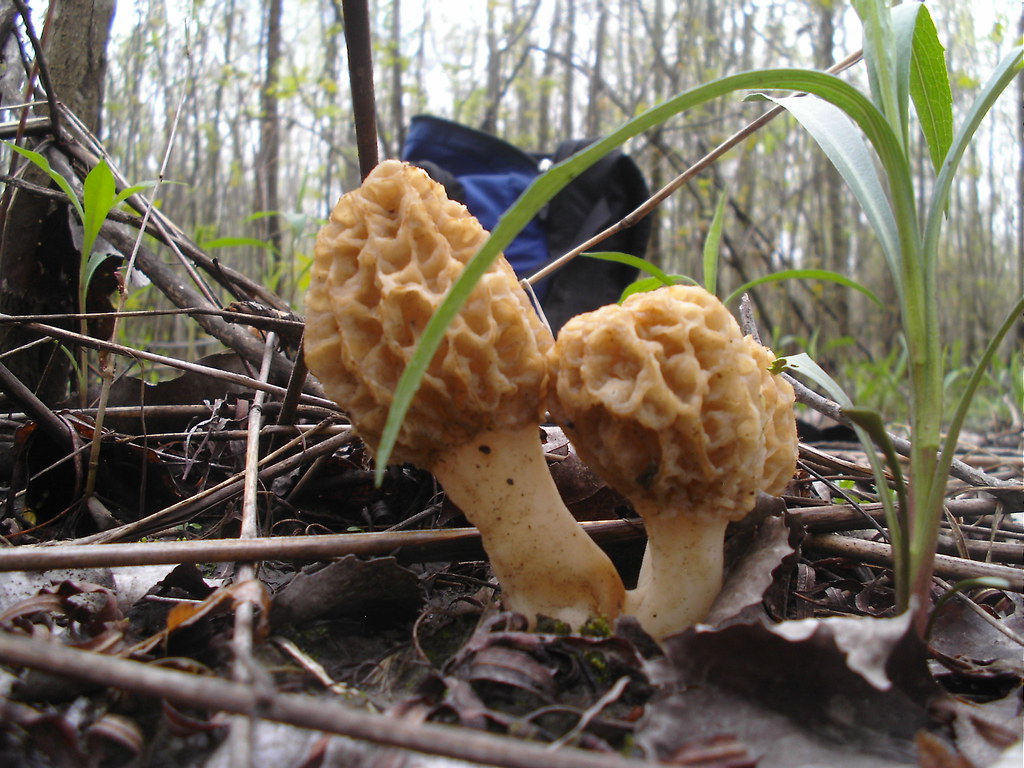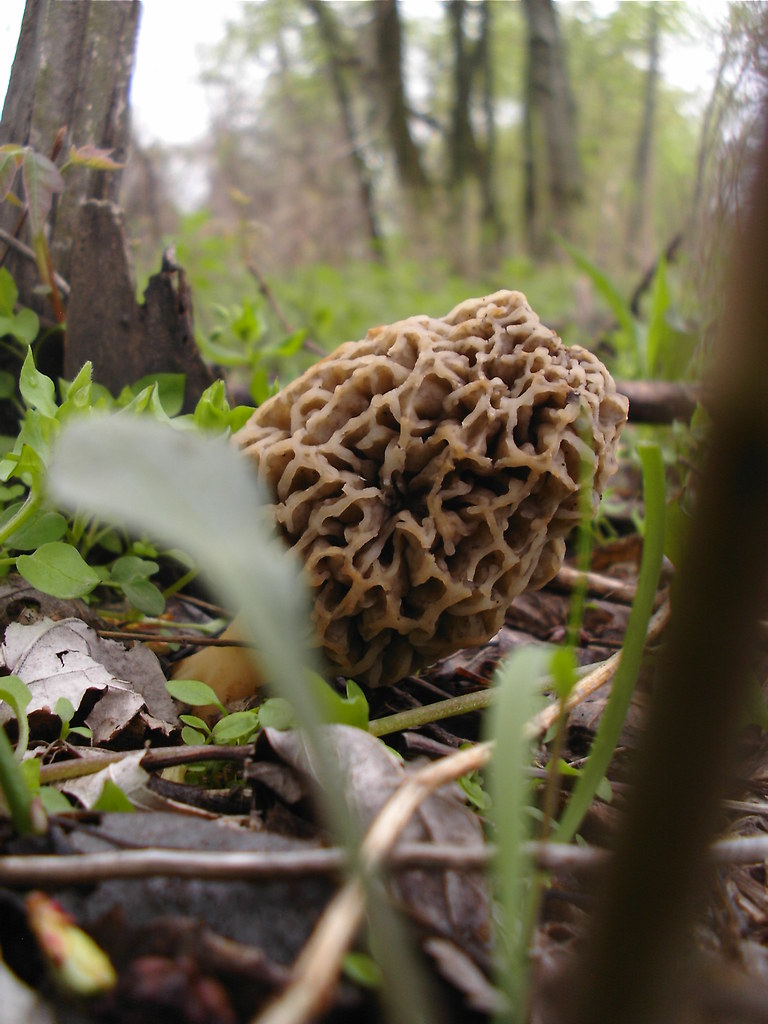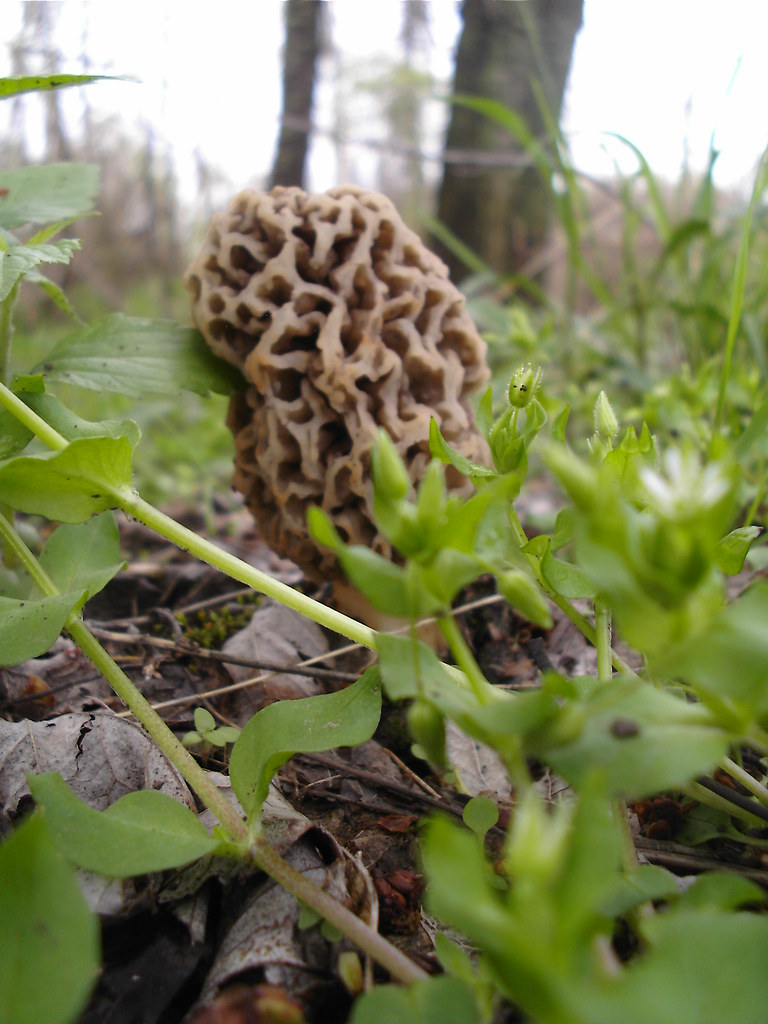The season drawing to a close does not mean that there will be no more mushrooms. I am sure if I looked hard enough I could still find a hen or two especially if I went a little bit further south, but I am literally henned out so I probably won't be heading out anytime soon to look for more.
And in a few weeks, I'm sure I will get the urge to walk the woods again. There are two mushrooms that you can find in abundance during the warmer spells of winter. The first I will mention only in passing. It is the velvet foot or Flammulina velutipes mushroom . I DO NOT recommend that novices hunt and eat this one as it has a very poisonous look-a-like, the deadly galerina. Although many mushrooms are

 poisonous, few are truly fatal, but the galerina is one of them. Look at the pictures on the right. The first one is velvet foot and the second one is the deadly galerina.
poisonous, few are truly fatal, but the galerina is one of them. Look at the pictures on the right. The first one is velvet foot and the second one is the deadly galerina.Can you tell the difference? This is one case where you have to take a spore print to be absolutely certain. Velvet foot should give you a white print, galerina will produce a rusty brown spore print. Until you really know what you are doing, it is best to just stick with the cultivated version of this mushr
 oom, Enoki, pictured last. You can hunt it down in the produce aisle of you local grocer or some of the finer restaurants in town.
oom, Enoki, pictured last. You can hunt it down in the produce aisle of you local grocer or some of the finer restaurants in town.It took me about five years before I trusted myself to properly identify this mushroom and I still pass on it many times I see it just in case. However, they are quite tasty. If you have ever had tried enoki then you know a little bit of what I mean. Though they look completely different and even taste different they give you a hint of the flavor of those found in the wild.
So if you didn't get your fill of wild edibles this year, do not fret, there is still a chance to find some nice oysters. I tend to avoid older specimen who have that slight fishy smell, but I know plenty of people who eat them as well. In my opinion they aren't quite as tasty and the texture can leave something to be desired, so I generall only pick the younger ones, especially those still in the button stage. The one good thing about hunting in winter is NO BUGS so not only do you not have to worry about ticks and skeeters, but your mushrooms are nice and larva and beetle free so you can keep all you find.
Another reason I mainly look for oysters where I hunt morels is that you can never start scouting too early. Finding that dead elm or recently blow down or chopped off cottonwood, sycamore, or maple and making note of it can pay huge dividends come spring when you can be the first to these trees with the potential to produce 50 to 100 morels. If find some of these, check them early and often come April, especially those with lots of exposure to the sun. Last year I found a nice mess of morels around one of these trees. So, even if you don't find any oysters, a winter walk in the woods can be well worth the effort.










